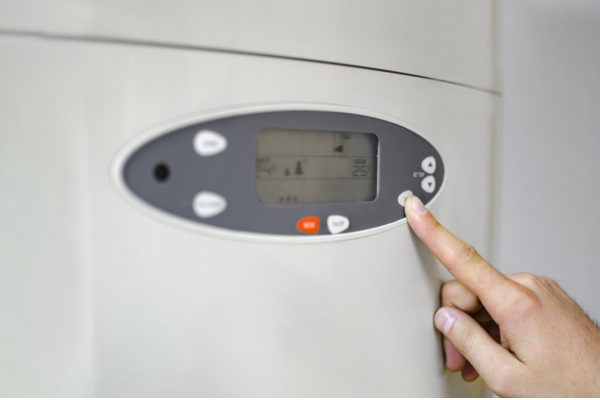
When you’re choosing a hot water system, it’s not just about picking a brand or deciding between gas and electric. One of the most important—and often overlooked—factors is making sure the system’s capacity matches your household’s demand.
Get this balance wrong, and you’ll either run out of hot water when you need it most or end up paying too much for a system that’s larger than necessary. Here’s what you need to know to choose the right size system for your home.
What do ‘capacity’ and ‘demand’ mean?
Capacity refers to how much hot water a system can supply. In storage systems, it’s about how much hot water the tank holds and how quickly it can reheat. In continuous flow systems, capacity is measured by how many litres per minute (L/min) the unit can heat as water passes through.
Demand is the amount of hot water your household typically uses, especially during peak times like mornings and evenings when multiple taps and showers might be in use.
Sizing a storage hot water system
If you’re installing a storage system, the tank size needs to be large enough to cover your household’s daily needs, including those peak periods. As a general guide:
- Electric storage systems: Allow for 55–60L of hot water per person, per day.
- Gas storage systems: Usually more efficient, needing only 30–40L per person, per day.
However, it’s not just the size of the tank that matters—it’s also how quickly it can heat water again after use. For example, a small 50L tank may be enough for a single occupant if hot water usage is spread out. But in a family home, that same tank would run cold quickly.
Higher efficiency systems with better insulation and faster recovery rates may allow for smaller tanks without sacrificing comfort. Learn more about lighting, appliance and hot water efficiency standards here.
Sizing a continuous flow system
Also known as instantaneous systems, continuous flow heaters don’t store hot water—they heat it as you need it. This means their capacity is based on flow rate, not tank size.
To figure out what flow rate you need, consider how many hot water outlets might be used at once. A standard showerhead, for example, uses around 7–9L/min. If two showers and a kitchen tap could be in use simultaneously, you’ll need a system that can deliver at least 20–24L/min.
Gas-powered models tend to be more effective than electric when it comes to high-flow, multi-outlet demand. They also produce fewer greenhouse gas emissions than older electric systems, making them a more energy-efficient option.
For more information, see instantaneous hot water systems.
Solar hot water: collector size and storage
With solar systems, both collector area and tank size matter. If your system is too small, it won’t supply enough hot water—too large, and you’ll pay more than you need to. A general sizing guide for solar hot water is:
- 1–2 people: 180L tank with 2m² of collector area
- 3–4 people: 300L tank with 3m² collector area
- 5–6 people: 440L tank with 6m² collector area
Because solar gain varies throughout the year, most solar systems also include a booster—either electric or gas—for cloudy days or times of high demand. You can read more in how solar hot water systems work.
Factors to consider when matching capacity to demand
To ensure your hot water system is a good fit, consider the following:
- Number of people in the home – The more people, the more hot water you’ll need.
- Timing of use – Do people shower at the same time or spread throughout the day?
- Appliances – Dishwashers and washing machines connected to hot water will increase demand.
- Type of system – Storage or continuous flow, and the energy source (gas, electric or solar).
- Flow rates of fixtures – Some modern showers and taps are designed to be water-efficient, which can reduce your total demand.
These elements all work together to determine how much hot water your household needs and how it should be delivered.
A note on energy efficiency
Choosing a system with a high energy rating can make a big difference to your long-term running costs. This is especially important in storage systems, which can lose energy through standing heat loss even when not in use.
Electric storage systems tend to be the least efficient unless paired with solar panels or used on off-peak tariffs. Gas systems and continuous flow heaters are generally more efficient, and solar hot water systems can offer the biggest savings over time—especially when combined with rebates or incentives.
Example system sizing
| Household size | Suggested system type | Approximate size |
|---|---|---|
| 1–2 people | Electric storage | 80–125L tank |
| Gas storage | 90–130L tank | |
| Continuous flow | 16L/min | |
| 3–4 people | Gas storage | 130–170L tank |
| Continuous flow | 20–24L/min | |
| Solar (with booster) | 300L tank + 3m² collectors | |
| 5–6 people | Gas storage | 170–260L tank |
| Continuous flow | 26–32L/min | |
| Solar (with booster) | 440L tank + 6m² collectors |
Final thoughts
Matching the capacity of your hot water system to the actual demand in your household isn’t just good practice—it can save you money, reduce your energy use and improve day-to-day comfort.
Whether you’re choosing a storage, continuous flow or solar system, taking the time to calculate your hot water needs properly is the best way to make sure you’re never left in the cold.





